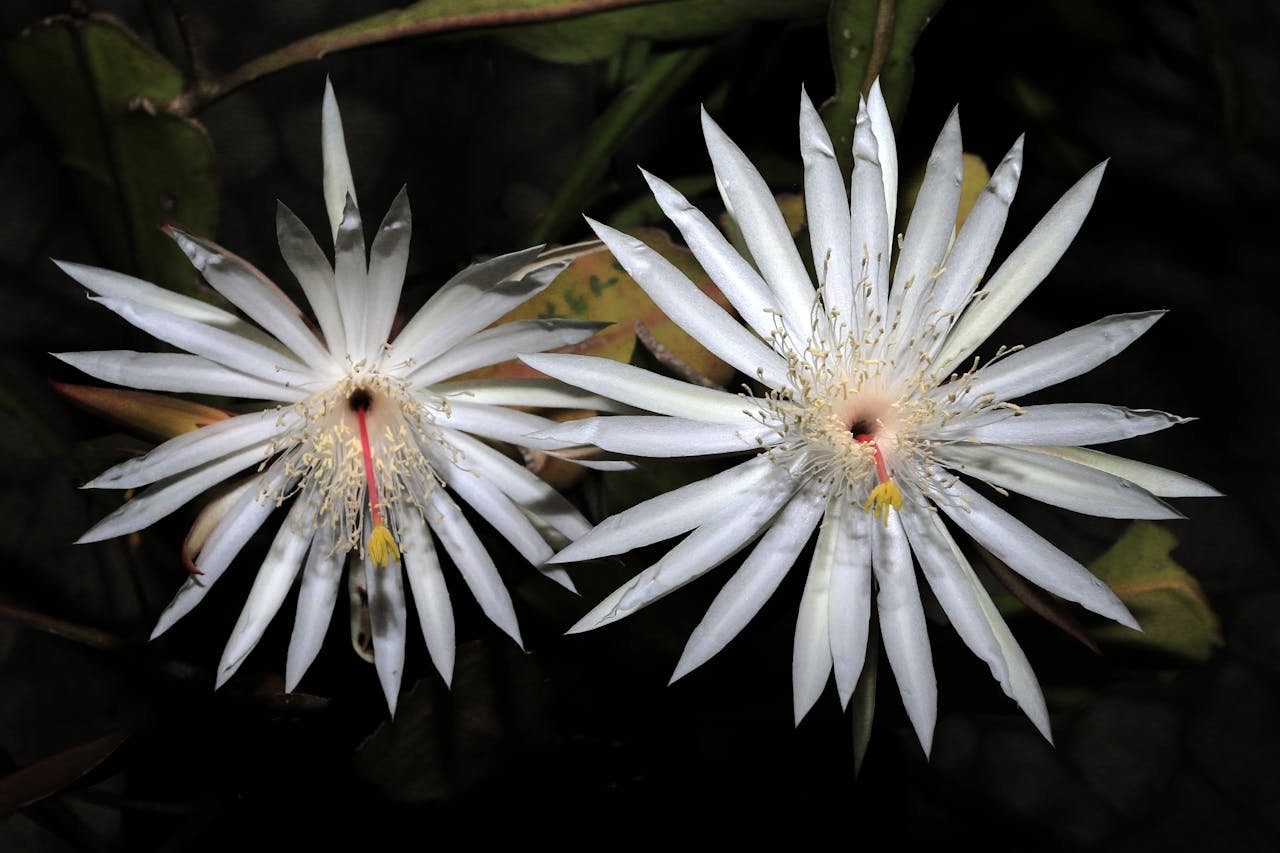When we think of flowering succulents, the image that usually comes to mind is a sun-drenched garden and blossoms opening to bask in the daylight.
But some of the most captivating succulent blooms don’t wake up with the sun—they wait for moonlight.
Succulents that bloom at night are rare, intriguing, and often unexpectedly fragrant.
Whether you’re a curious collector or just want something enchanting for your evening balcony, these nighttime bloomers are absolutely worth a spot in your indoor garden.
In this guide, we’ll explore the most stunning night-blooming succulents, how to care for them, and why they’re perfect for apartment living or dimly lit spaces.
From the famed Queen of the Night to lesser-known fragrant varieties, prepare to fall in love with this darker side of succulent gardening.
Why Do Some Succulents Bloom at Night?
Nature rarely does anything without a purpose. Night-blooming succulents have evolved to open their flowers in the evening to attract specific pollinators like moths and bats, which are active after dark.
In hot desert environments, blooming at night also helps protect delicate petals from intense daytime heat and reduces water loss.
This nocturnal habit makes these succulents perfect for gardeners who appreciate subtlety, mystery, and the kind of beauty that reveals itself quietly when the world slows down.
The Science Behind Night Blooming
Night-blooming succulents aren’t just a quirky botanical twist—they’re marvels of natural adaptation. But what actually causes them to bloom after dark?
These succulents are native to hot, arid environments where blooming during the day would expose delicate flowers to scorching sunlight and dehydration.
Instead, they’ve adapted to open their flowers at night, when temperatures are lower and humidity is slightly higher.
More importantly, they’ve evolved alongside nocturnal pollinators. Many night bloomers rely on:
- Moths, especially sphinx moths
- Bats, particularly in Central and South America
- Certain beetles and flies, drawn to scent rather than color
Because of this, their blooms tend to be:
- White or pale-colored, which are easier to see in low light
- Highly fragrant, especially between dusk and dawn
- Short-lived, sometimes lasting only a few hours
When you grow these succulents indoors, you’re recreating these wild environmental cues as best you can.
Even without moths or bats, some indoor gardeners hand-pollinate night-blooming succulents if they want to harvest seeds or fruit.
10 Stunning Succulents That Bloom at Night
These are some of the most beloved and visually striking night-blooming succulents, perfect for both beginners and experienced plant lovers.
1. Queen of the Night (Epiphyllum oxypetalum)
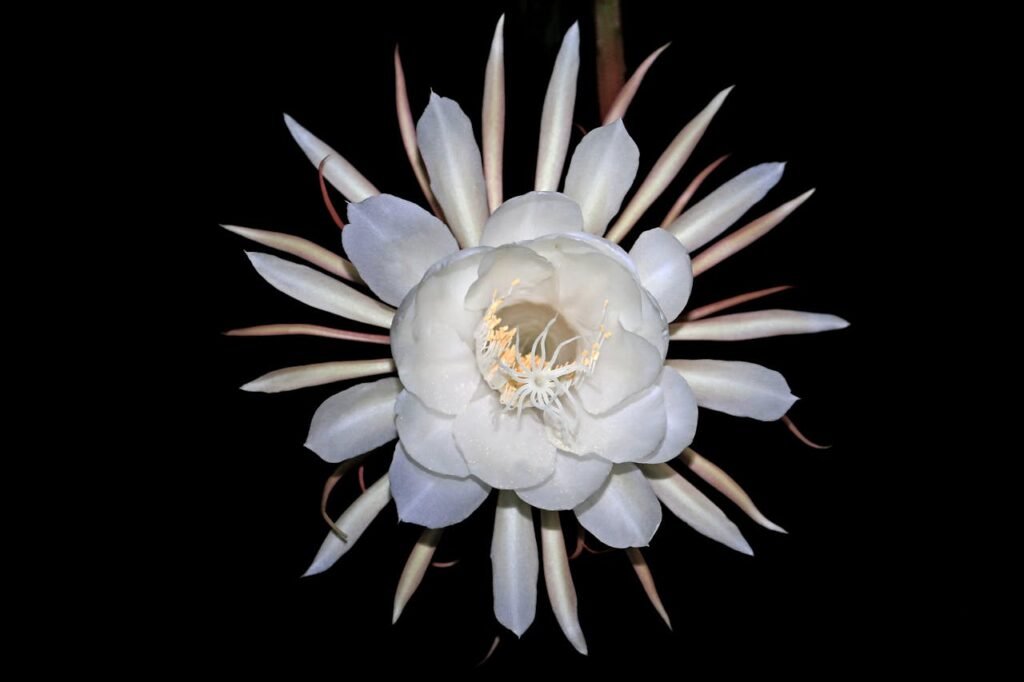
Often the first plant that comes to mind when discussing night-blooming succulents, the Queen of the Night is both dramatic and elusive.
Its enormous white flowers open for one night only, filling the air with a rich, sweet fragrance before wilting by dawn. This makes the bloom a celebrated event for collectors.
- Bloom Time: Summer nights
- Light Needs: Bright, indirect light
- Special Tip: Grows well in hanging baskets indoors
2. Dragon Fruit Cactus (Hylocereus undatus)

Yes, the cactus that gives you dragon fruit also blooms at night. Its large, star-shaped white flowers are breathtaking and typically last just one night.
The plant can be grown in large containers, especially if you have access to bright light.
- Bloom Time: Late spring through fall
- Light Needs: Full sun to filtered sunlight
- Bonus: You may even get fruit if pollination occurs
3. Cereus peruvianus (Peruvian Apple Cactus)
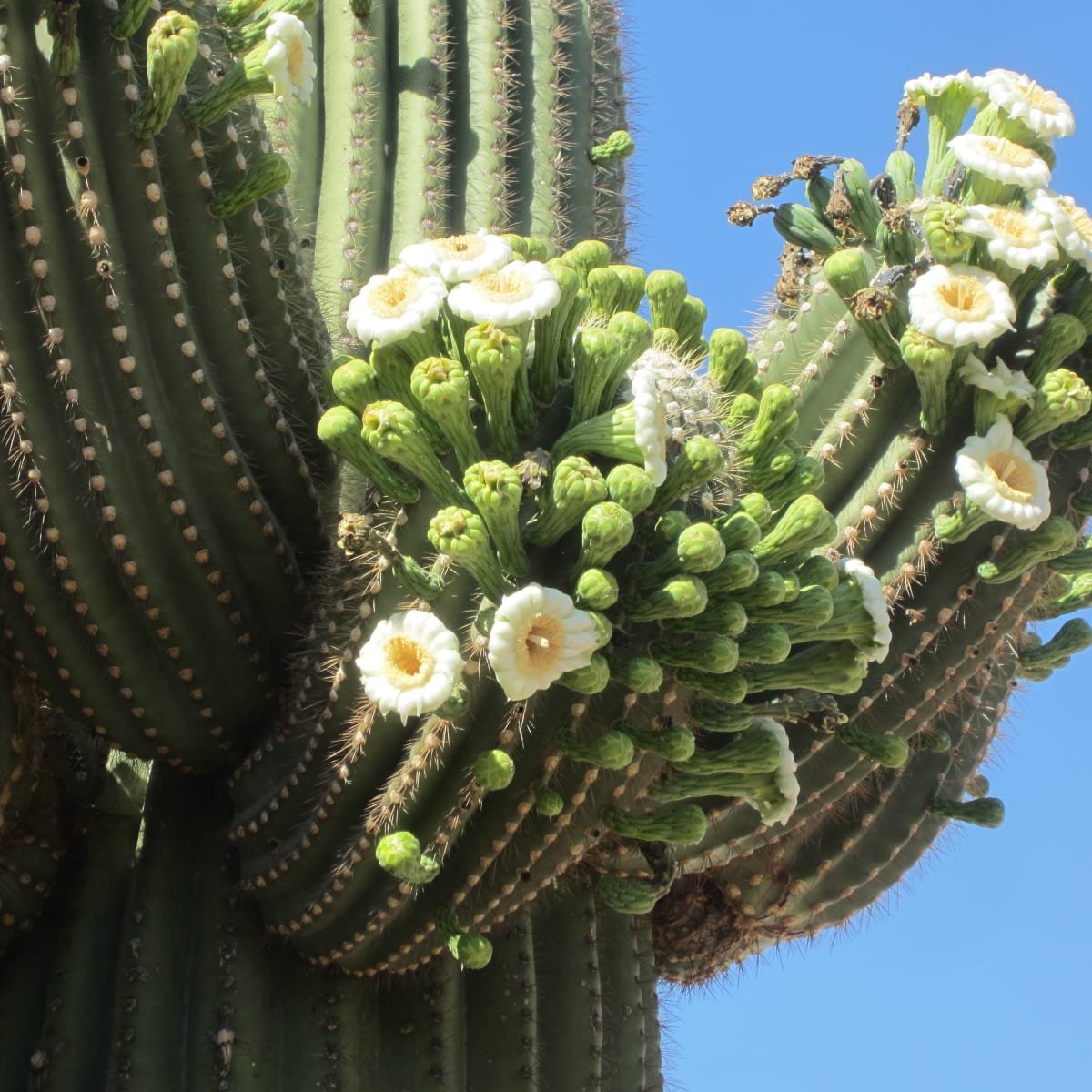
This tall, columnar cactus is popular in decorative pots, but what most people don’t know is that it blooms at night with stunning white or pink flowers.
These blooms are especially fragrant and may attract pollinators even indoors near open windows.
- Bloom Time: Summer
- Light Needs: Bright, direct light
- Care Tip: Let soil dry between waterings
4. Peniocereus greggii (Arizona Queen of the Night)
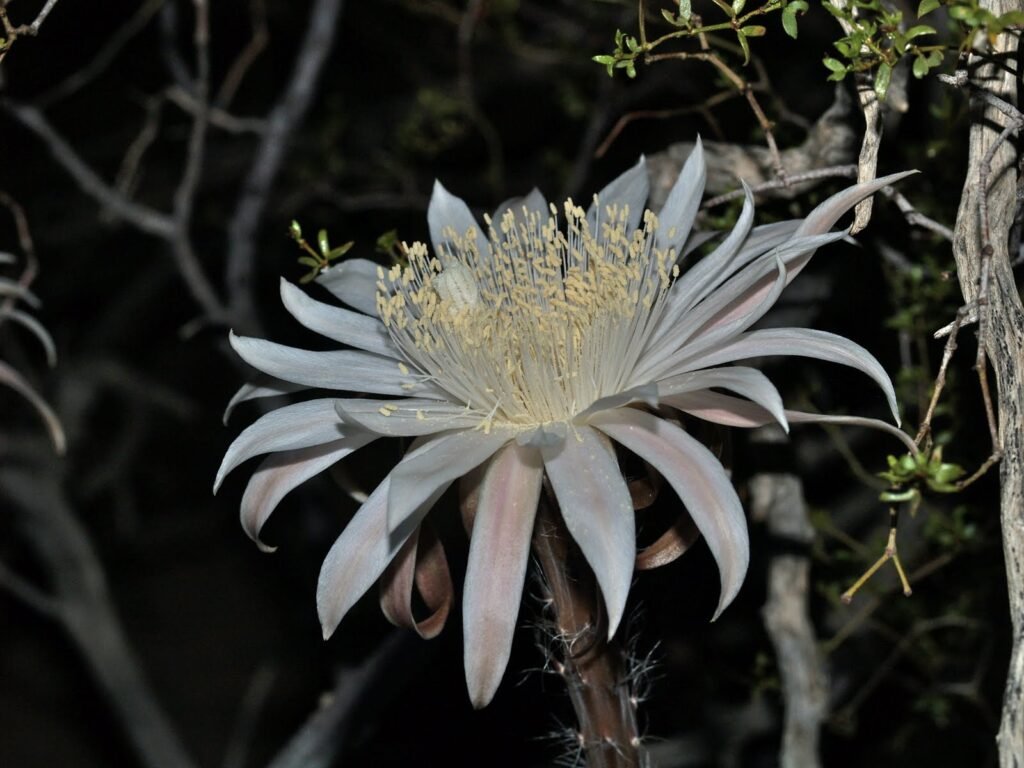
Often mistaken for dead sticks during dormancy, this cactus surprises with incredibly large, fragrant flowers that open at night. Native to the desert southwest, it thrives in containers in warm climates.
- Bloom Time: Summer evenings
- Light Needs: High light or outdoor sun
- Surprise Factor: It appears lifeless until it blooms
5. Selenicereus grandiflorus (Night-Blooming Cereus)

This vine-like cactus is often confused with others but stands out with its large, intensely fragrant flowers that open at dusk and close by morning. It prefers a hanging pot or a trellis for support.
- Bloom Time: Mid to late summer
- Light Needs: Bright, indirect light
- Watering: Keep slightly moist during blooming season
6. Stapelia gigantea (Carrion Flower)
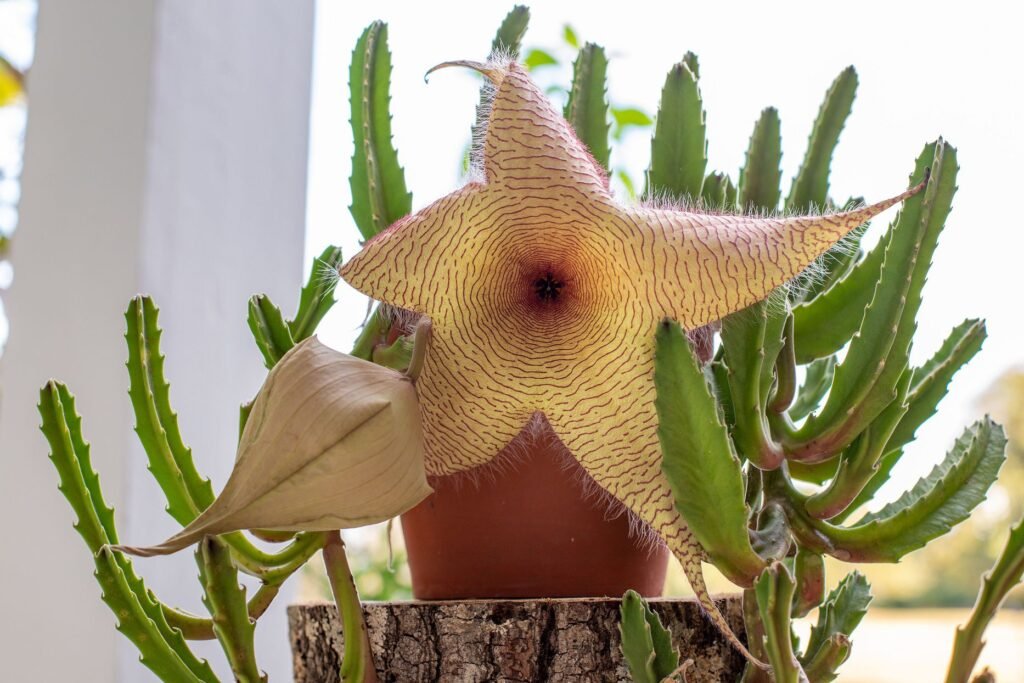
Though not traditionally beautiful in scent (its blooms smell like rotting meat), this unique plant produces large, starfish-shaped flowers that open during twilight hours.
It’s perfect for those who want something truly different and love attracting pollinators like flies.
- Bloom Time: Late summer
- Light Needs: Bright, indirect sun
- Fun Fact: Flowers can grow up to 10 inches across
7. Harrisia jusbertii (Night-Blooming Harrisia)
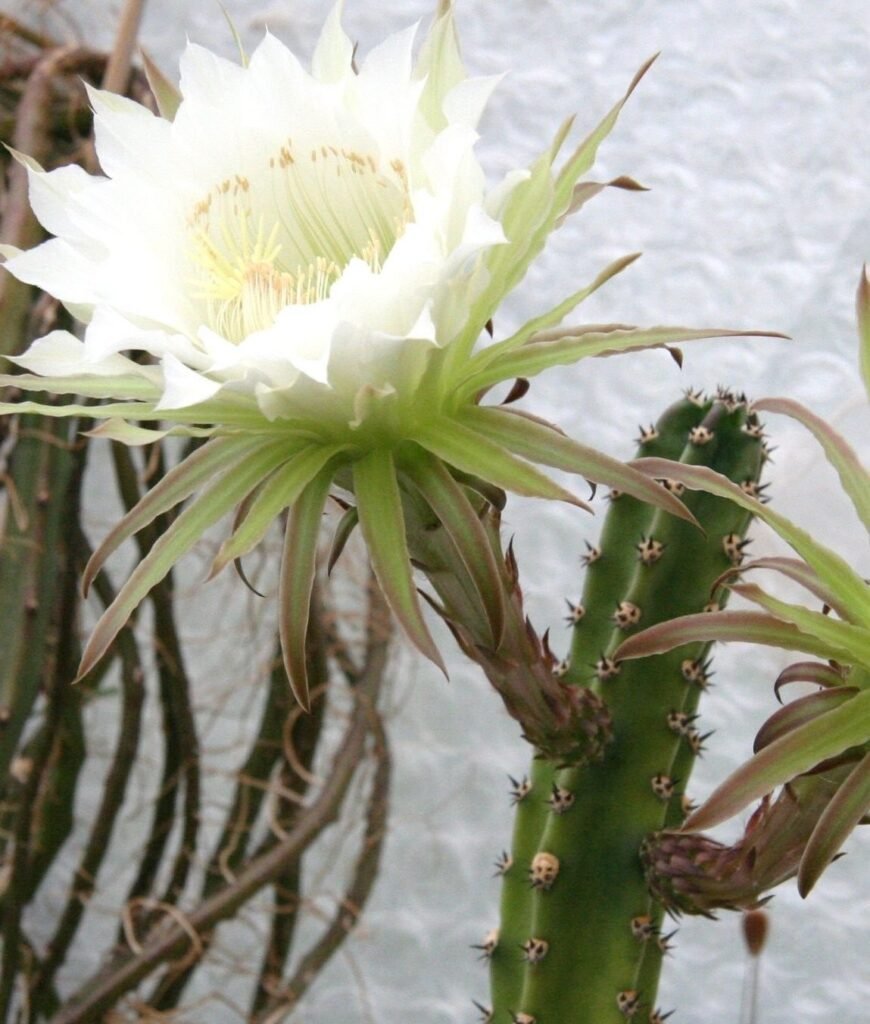
A lesser-known cactus that still delivers stunning white blossoms after dark. This night bloomer is perfect for patios or window-side containers where you can observe the bloom unfold.
- Bloom Time: Summer nights
- Light Needs: Full sunlight
- Style Tip: Looks elegant in tall containers
8. Epiphyllum anguliger (Fishbone Cactus)
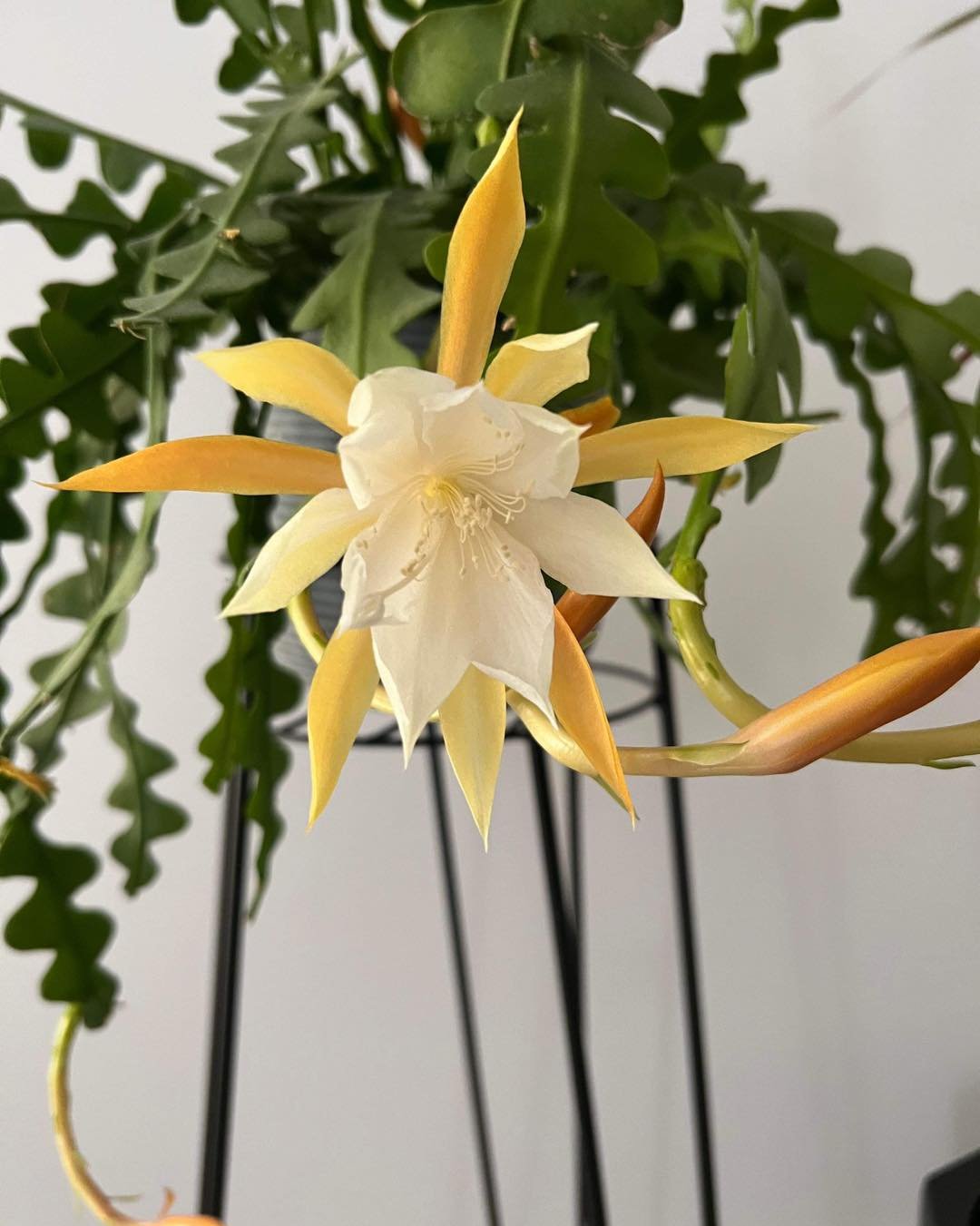
This funky, zigzag-leafed cactus not only makes a statement with its form—it also blooms at night with highly fragrant, white to pale-yellow flowers. It’s great for hanging baskets and quirky interiors.
- Bloom Time: Late summer to fall
- Light Needs: Bright, filtered light
- Watering: Regular but let soil dry in between
9. Sansevieria trifasciata (Snake Plant, flowering variety)
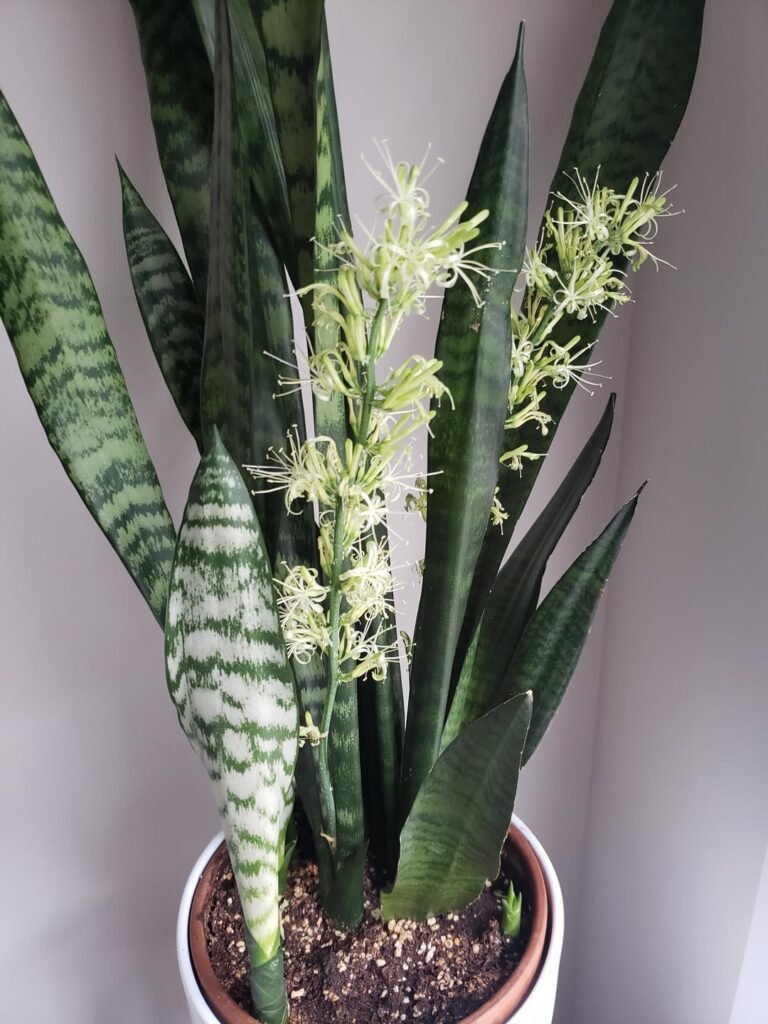
While not commonly known for flowering, Snake Plants occasionally produce small, night-blooming white flowers when mature and slightly root-bound. The flowers are surprisingly fragrant and delicate.
- Bloom Time: Irregular
- Light Needs: Low to medium indirect light
- Indoor Bonus: One of the best air-purifying plants
10. Echinopsis spp. (Easter Lily Cactus)
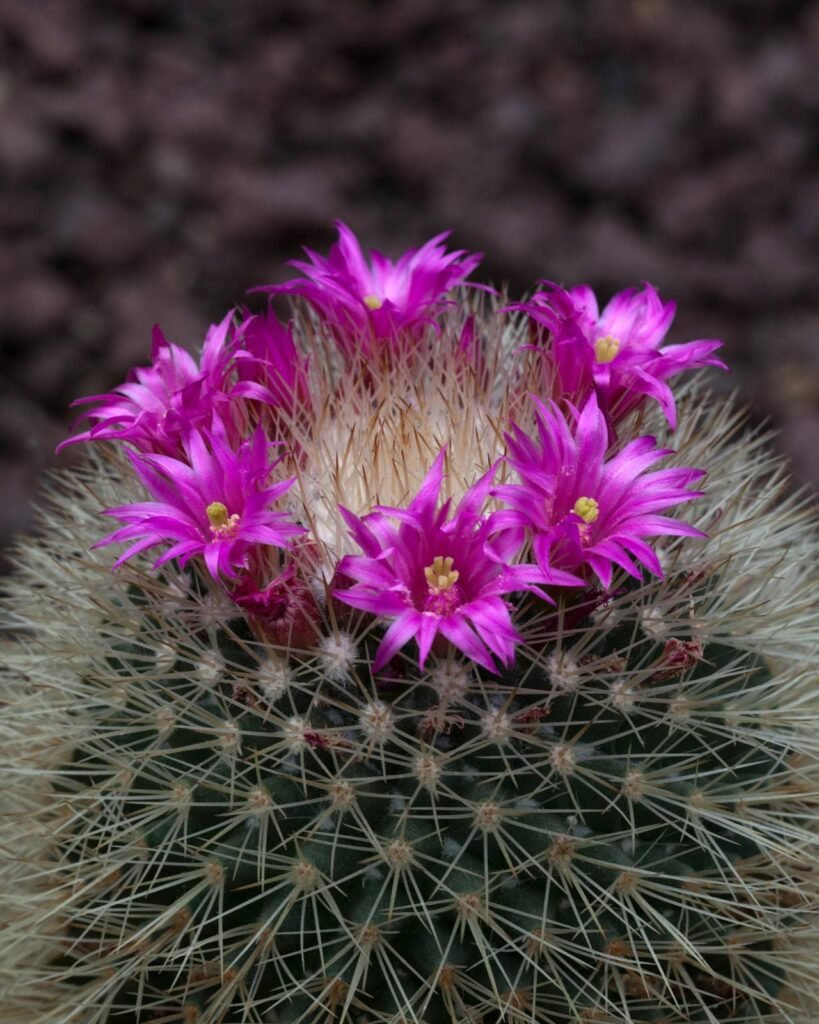
These small, round cacti produce massive flowers that often bloom at night and last only a day or so. They’re perfect for apartment dwellers due to their small footprint and stunning, short-lived display.
- Bloom Time: Spring to summer
- Light Needs: Bright sunlight
- Care Tip: Let soil dry completely before watering
Indoor Care Tips for Night-Blooming Succulents
Caring for night bloomers doesn’t differ much from other succulents, but attention to timing and light exposure is key.
Light
Most night bloomers prefer bright but indirect light, especially if they’re epiphytes like Epiphyllum species. If your home lacks strong sunlight, consider a grow light. Aim for at least 6 hours of light daily.
Watering
Use the soak-and-dry method. Let the soil dry out completely between waterings. Many bloomers increase water intake in spring and summer.
Soil
Opt for a well-draining cactus/succulent mix. Adding perlite or sand to regular potting soil improves drainage.
Temperature
These plants do best between 60–85°F (15–30°C). Avoid cold drafts or overly humid environments unless your plant prefers it (e.g., Stapelia).
Dormancy
Most night-bloomers enter a dormant period in winter. Reduce watering, skip fertilizing, and allow them to rest. This period often helps trigger blooming the next season.
How to Encourage Night Blooming
If you’ve brought home one of these beautiful succulents and you’re eagerly awaiting those rare, mysterious blooms—don’t worry, you’re not alone.
The truth is, getting night-blooming succulents to flower indoors takes patience, consistency, and a little know-how. But the reward is more than worth the wait.
Here are some proven ways to give your plant the best chance to bloom after dark:
Provide Consistent, Bright Light
Most night-blooming succulents (especially cacti) need bright, indirect sunlight for at least 6–8 hours a day. If you don’t have a sunny south-facing window, a full-spectrum grow light can supplement natural light. Lack of light is one of the top reasons these succulents won’t bloom indoors.
Use a Balanced Fertilizer at the Right Time
Feeding your plant during its active growing season (spring to early summer) supports flower development. Choose a low-nitrogen, high-phosphorus cactus fertilizer, diluted to half-strength. Avoid overfeeding, which can cause leafy growth at the expense of flowers.
Respect Dormancy Cycles
Many night-blooming succulents require a cooler, drier period in winter to reset their internal clock and prepare for flowering. Keep your plant in a slightly cooler room (around 50–60°F / 10–15°C) and cut back on watering. Mimicking desert winters helps signal the plant to bloom once warmth returns.
Give the Plant Time to Mature
Some varieties like Epiphyllum oxypetalum may not bloom until they’re several years old. This isn’t a sign of neglect—it’s part of the natural cycle. As long as your plant looks healthy and continues growing, it’s on the right track.
Provide Proper Support
For climbing or trailing succulents like Fishbone Cactus or Night-Blooming Cereus, use a trellis or hanging setup. Proper airflow and space can reduce stress and help flower buds develop.
Best Times to Catch a Night Bloom
If you’re new to night-blooming succulents, it’s easy to miss the show—especially if you’re not watching closely. Here’s how to time it right:
Watch for Bud Development
You’ll usually see small, elongated buds forming a few weeks before blooming. These often swell and elongate before opening.
Keep an eye on these every day—once they start to change shape or color, blooming may happen that night.
Evening Is Key
Most night bloomers open between 8 PM and midnight, depending on temperature and light conditions. If you notice swelling buds during the day, prepare for a nighttime surprise.
You may even want to set an alarm!
Peak Blooming Seasons
Most varieties bloom between late spring and mid-summer, though some may continue into early fall. Bloom cycles depend heavily on light, warmth, and plant maturity.
Mark your calendar once your plant blooms—many follow annual rhythms.
Set Up Your Space
Place blooming plants near windows, patios, or balconies where you can easily enjoy their fragrance and beauty. Add soft lighting to create a cozy space for viewing.
Even a balcony tea light setup can enhance the experience of watching these flowers open under the stars.
Styling Night Bloomers Indoors
Night-blooming succulents are more than just exotic plants—they’re living art. Their bold silhouettes, sprawling shapes, and occasional bursts of dramatic flowers make them ideal for styling in modern interiors.
Instead of letting them blend into the background, give these beauties a stage:
- Hang them in baskets near east- or west-facing windows. This works especially well for varieties like Epiphyllum oxypetalum or Fishbone Cactus, whose trailing or arching habits add softness to vertical space.
- Choose earth-toned or neutral ceramic pots to let the foliage and flowers stand out. Matte finishes work well to emphasize texture, especially under warm lighting.
- Display them in the bedroom or reading nook, where the nighttime blooms can be appreciated in quiet moments. Some of these succulents release a rich fragrance that creates a calming, spa-like feel at night.
- Add soft lighting like fairy lights or moon lamps nearby. This not only sets the mood but enhances the surreal experience of watching the flowers unfold after dark.
- Use them as part of a meditative evening corner—pair your succulent with calming décor like crystals, candles, or natural wood accents.
Whether you’re going minimalist or eclectic, night-blooming succulents give your space life, scent, and softness when the sun goes down.
Common Problems
Even the toughest succulents can run into issues indoors, especially if lighting or watering habits aren’t quite right.
Here’s a breakdown of what might go wrong with your night-bloomers—and how to fix it.
- No Blooms?
If your plant looks healthy but hasn’t flowered, it may not be getting enough light or didn’t experience a cool, dry dormancy. Most night bloomers need a consistent seasonal rhythm to flower. Try moving it to a brighter location or simulate a winter rest period by reducing water and lowering temps slightly. - Stretchy, leggy growth (etiolation)?
This means your plant is stretching for light. You’ll notice long, weak stems and sparse leaves. Shift it closer to a well-lit window or add a grow light for at least 6 hours a day. - Rotting Stems or Mushy Leaves?
Overwatering or poorly draining soil is often the culprit. Succulents need soil that dries quickly. Repot into a gritty cactus mix and let it dry completely between waterings. Always use pots with drainage holes. - Pest Trouble (Mealybugs, Spider Mites, Scale)?
These pests thrive in dry, dusty indoor spaces. If you see cotton-like patches, tiny webs, or sticky residue, isolate the plant. Wipe leaves with diluted rubbing alcohol or spray with neem oil every few days until pests are gone. - Shriveling or wrinkling?
This can happen from underwatering or sudden temperature changes. If the soil is bone dry and the pot feels light, it’s time to water thoroughly. However, avoid watering too often—consistency is key. - Brown or crispy edges on flowers?
This could be caused by hot air drafts or sunburn. Keep blooming plants away from heaters or direct midday sun. Filtered light is ideal when flowers are forming.
Tip: Most night bloomers are slow to show distress—observe your plant weekly and respond early for the best outcomes.
FAQs
Q1: Do all succulents bloom at night?
No. Only specific types—usually desert or tropical species—have evolved to bloom at night for pollination or climate reasons.
Q2: How often do night-blooming succulents flower?
Most bloom once or twice a year, often only for one night. Some, like Epiphyllum, may bloom several times during peak season.
Q3: Can night-blooming succulents survive indoors year-round?
Absolutely. Many are well-suited for indoor environments, especially with bright windows or supplemental grow lighting.
Final Thoughts: Let the Night Garden Bloom
Succulents that bloom at night are a delightful secret in the plant world. Their rare, short-lived flowers and intoxicating fragrances make them the showstoppers of any collection. For apartment dwellers or nighttime bloom-watchers, they offer a touch of magic that unfolds under moonlight, not sunbeams.
With the right care—light, patience, and a bit of love—you can experience one of gardening’s most enchanting moments. Whether it’s the dramatic bloom of a Queen of the Night or the soft scent of a Fishbone Cactus opening at dusk, these plants bring mystery and beauty into your home in the most unexpected way.
So light a candle, pour a cup of tea, and enjoy the quiet bloom of nature, one succulent flower at a time.
